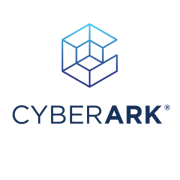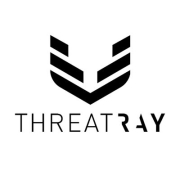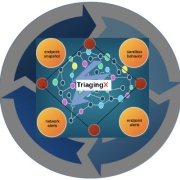Anti-Malware Tools provide essential protection against malicious software, safeguarding systems from threats like viruses and ransomware. They're integral for maintaining cybersecurity and ensuring data integrity.
Comprehensive Anti-Malware Tools offer multilayered defense mechanisms to detect and neutralize threats proactively. They employ real-time monitoring, heuristic analysis, and machine learning to protect against known and emerging malware. These tools are trusted by enterprises to enhance IT security infrastructure and reduce vulnerabilities.
What are the critical features?In industries such as healthcare and finance, Anti-Malware Tools are crucial to ensure compliance with strict data protection regulations. They help safeguard sensitive client information from unauthorized access, maintaining trust and security in operations.
Organizations benefit from Anti-Malware Tools by ensuring robust protection against cyber threats, enhancing productivity and safeguarding sensitive data. These solutions are indispensable for maintaining a secure technological environment and protecting critical infrastructure.























































































































Antivirus software and anti-malware are both types of cybersecurity.
Antivirus software was developed in the 1980s to detect viruses and protect computers from them. In those days, antivirus software was exclusively reactive. In addition to only being able to detect viruses after the infection had already taken place, they could only identify viruses by looking for their signature characteristics. Each new virus had to be analyzed to determine its signature, and then added to the list of viruses the software would protect against.
Cyberthreats today are much worse than the viruses of yesteryear. They entrench themselves deeper into computer systems and evade detection more skillfully. A plethora of new cyberthreats have arisen, categorized as malware. Malware includes malicious browser help objects (BHOs), ransomware, browser hijackers, keyloggers, rootkits, backdoors, worms, dialers, malicious LSPs, fraudtools, spyware, adware, infected or malicious URLs, social engineering techniques such as email phishing, online identity theft, online banking attacks, botnet DDoS attacks, APT (advanced persistent threat), and more.
Antivirus companies continued to add protection to their software from all of these new threats, but it was unclear whether they should change what they called it. The word “antivirus” had become synonymous with cybersecurity, which is why many people still use it today, even though it is outdated. Anti-malware is a more modern term that encompasses many kinds of malicious software, including viruses.
While the old signature-based threat detection method can be effective, modern anti-malware also uses a newer detection method called heuristic analysis. This method analyzes a program’s structure, behavior, and other attributes and assesses the likelihood that it contains malware. It also analyzes web page characteristics and blocks any site that it deems risky. Heuristic analysis is a proactive rather than reactive method, detecting malware before it has had a chance to infect your computer.
Anti-Malware Tools safeguard your business by detecting and removing malware before it infiltrates your systems. These tools identify threats in real-time, providing immediate alerts and automated responses to neutralize potential damage. By continuously updating their threat databases, they ensure you're protected against the latest vulnerabilities, keeping your data secure and operations running smoothly.
What Features Should I Look for in Anti-Malware Solutions?When selecting Anti-Malware Solutions, prioritize features like real-time scanning, automatic updates, and behavioral analysis. Real-time scanning ensures immediate threat detection, while automatic updates keep your software current with the latest threat intelligence. Behavioral analysis helps identify and mitigate unknown threats by monitoring suspicious activity patterns. These features work together to provide comprehensive protection.
How Do Anti-Malware Tools Differ from Antivirus Software?While both Anti-Malware Tools and antivirus software aim to protect your systems, Anti-Malware offers broader protection. Antivirus primarily targets known viruses, whereas Anti-Malware addresses a wider range of threats such as ransomware, spyware, and rootkits. Anti-Malware Tools employ advanced algorithms to detect and mitigate emerging threats, offering more robust defense mechanisms against sophisticated cyber-attacks.
Are Cloud-Based Anti-Malware Solutions Effective?Cloud-based Anti-Malware Solutions are highly effective due to their scalability and accessibility. These solutions offer resources on-demand, which means you can easily scale protection based on your needs. Cloud-based solutions provide faster updates and threat intelligence sharing, enhancing your ability to detect and respond to threats quickly. They also reduce the need for extensive on-premises infrastructure, lowering costs while improving security coverage.
What Are the Costs Associated with Implementing Anti-Malware Tools?The costs of implementing Anti-Malware Tools vary based on the size of your organization and the complexity of your security needs. Initial expenses may include software licenses, subscriptions, and setup fees. Monthly or yearly costs depend on user count and chosen features. Cloud-based solutions often provide cost-effective options by reducing on-premises hardware requirements. Investing in Anti-Malware Tools is crucial for preventing costly data breaches and downtime, making them a valuable asset in your cybersecurity strategy.